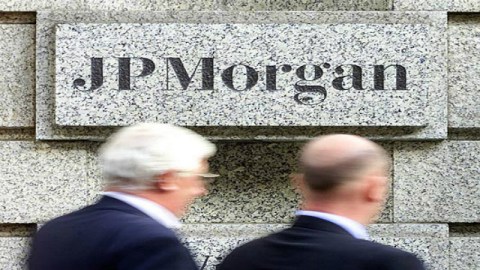When is Hedging More Like Speculation?

What’s the big deal about J.P. Morgan’s $2 billion trading loss? Austan Goolsbee, an economic advisor to President Obama, said the American public should be concerned because, in his words, it owned a life insurance policy on a guy who just got into a motorcycle accident without a helmet. But I think that may be an exaggeration. The bigger question is whether it makes sense for “portfolio hedging” to be part of a bank’s business.
A trader in J.P. Morgan’s London office managed to lose about $2 billion by trading in the derivatives markets. The bank was aware of the loss and stopped trading by the manager who was responsible last month. He had lost an enormous sum, but it still amounted to less than one percent of the bank’s net worth. J. P. Morgan’s stock dropped by about 9 percent on Friday, and other big banks suffered smaller drops.
Did this kind of trading put J.P. Morgan’s viability at risk, as Goolsbee implied? Probably not – even if the loss had gotten ten times as large before the bank stopped the trading, it wouldn’t have gone under. Did it put the financial system at risk? Hardly – in this case, the bank’s internal checks seem to have worked. And indeed, in past years J.P. Morgan made billions from “portfolio hedging” – the label it gave to this kind of trading. Making big losses from time to time was to be expected.
But that’s where the odd part of portfolio hedging comes in. In theory, these trades are meant to balance risks on the bank’s own balance sheet, protecting it from any big losses. There are lots of ways to do this; the simplest is to buy an asset whose prices goes up when the asset being balanced loses value. If this was all J.P. Morgan did, then a winning year in the portfolio hedging unit would mean a losing year somewhere else, and vice versa; in this case, the $2 billion loss would be offset by gains on another part of the bank’s balance sheet – perhaps even a cause for celebration, rather than hand-wringing.
Yet this kind of hedging is not all J.P. Morgan’s portfolio hedging unit does. In truth, the unit is essentially a huge hedge fund – a term that itself has often come to mean “speculating” as much as “hedging.” Its goal, like every other trading desk at J.P. Morgan, is to make money.
So does the portfolio hedging unit do anything to balance the bank’s risks, or is it just a risk in itself? Well, it is possible to hedge and make money with the same portfolio. Let’s say that you have two assets. One of them goes up in value when A happens. The other goes up when B happens. They both go up when C happens. So each asset is a hedge for the other, but they could both gain value. But if they both lose value when D happens, then together they might make your portfolio more risky, too. The problem at J.P. Morgan was of the D variety.
When the portfolio hedging unit is successful, it builds J.P. Morgan’s asset base and balances its risks. Both of these outcomes should increase J.P. Morgan’s ability to lend to and invest in growing companies. The question is how much of the latter outcome is really happening. If the answer is “a lot”, then portfolio hedging is helping the economy to expand. If the answer is “not much”, then there’s no reason for this hedge-fund-in-all-but-name to be part of J.P. Morgan; the risk of a costly implosion may be a lot smaller than Goolsbee suggests, but it’s still not zero.
Right now, we don’t know the answer, and neither do regulators. They don’t know enough about J.P. Morgan’s trading, and they haven’t even devised a way to ask the question. Perhaps they should.





